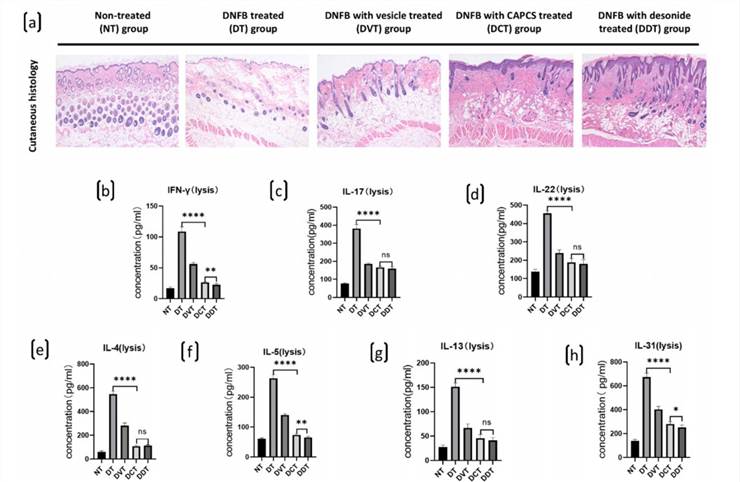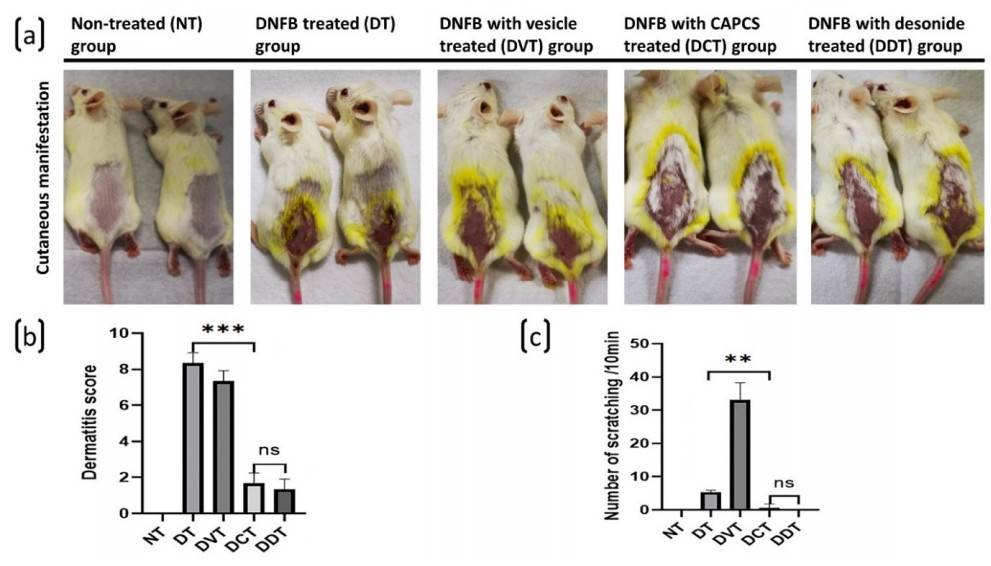2,4-dinitrofluorobenzene (DNFB)-Induced Atopic Dermatitis (AD) Model
If you're looking for reliable and effective animal models to evaluate the efficacy of your compounds in treating atopic dermatitis (AD), Creative Bioarray is here to help. With years of experience in this field, we have established a variety of AD animal models that can aid you in obtaining reliable results. One such model we offer is the 2,4-dinitrofluorobenzene (DNFB)-induced AD model. This particular model has been widely used in research and can provide you with valuable insights into the efficacy of your compounds. Our team of experts is always available to assist you in obtaining reliable and accurate results.
AD is a chronic and persistent inflammatory skin condition that affects millions of individuals worldwide. It is a complex disease that arises from a combination of genetic and environmental factors. Some of the factors that have been implicated in atopic dermatitis include IgE-mediated sensitization to environmental and food allergens, as well as abnormal reactions of the immune system against external antigens.
To study AD in mice, researchers often use DNFB as a common hapten to induce contact dermatitis. DNFB is known to recruit cytotoxic T lymphocytes to the skin, inducing keratinocyte apoptosis and disrupting the integrity of the skin. By understanding the mechanisms underlying atopic dermatitis, researchers can develop new and more effective treatments to alleviate the symptoms and improve the lives of those affected.
Our 2,4-dinitrofluorobenzene (DNFB)-Induced Atopic Dermatitis (AD) Model
- Available Animal
Mouse - Modeling Method
In the sensitization phase and challenge phase, mice are treated with DNFB in the dorsal skin and ear to induce AD model. - Endpoints
- Body weight
- Clinical score
- Serum IgE analysis
- Back skin thickness
- Ear thickness
- Cytokine analysis: IFN-γ, TNF-α, IL-4, IL-10, IL-13, etc.
- Number of scratching
- Histology analysis: H&E staining, Toluidine blue O staining
- Other customized endpoints: available upon request.
Example Data
 Fig. 1 Cutaneous histology and expression of inflammatory cytokines of dorsal skin lesion of in each group of BALB/c mice. (a) Cutaneous histology of mice in each group. (b–h) The expressions of inflammatory cytokines, including IFN-γ, IL-4, IL-5, IL-13, IL-31, IL-17, and IL-22, were increased significantly in DNFB-induced AD-like dorsal skin lesions in the DT, DVT, DCT, and DDT groups, in comparison to normal dorsal skin in NT group, and the levels of the cytokines expression were significantly decreased in the DCT and DDT groups, in comparison to the DT and DVT groups
Fig. 1 Cutaneous histology and expression of inflammatory cytokines of dorsal skin lesion of in each group of BALB/c mice. (a) Cutaneous histology of mice in each group. (b–h) The expressions of inflammatory cytokines, including IFN-γ, IL-4, IL-5, IL-13, IL-31, IL-17, and IL-22, were increased significantly in DNFB-induced AD-like dorsal skin lesions in the DT, DVT, DCT, and DDT groups, in comparison to normal dorsal skin in NT group, and the levels of the cytokines expression were significantly decreased in the DCT and DDT groups, in comparison to the DT and DVT groups
 Fig. 2 Cutaneous manifestations of DNFB-induced AD-like symptom, dermatitis score, and scratching behavior in BALB/c mice. (a) Cutaneous manifestations of mice in each group. (b) The final dermatitis scores of mice in each group. (c) Number of scratching of mice in each group.
Fig. 2 Cutaneous manifestations of DNFB-induced AD-like symptom, dermatitis score, and scratching behavior in BALB/c mice. (a) Cutaneous manifestations of mice in each group. (b) The final dermatitis scores of mice in each group. (c) Number of scratching of mice in each group.
In addition, we also provide other AD models that maybe you are interested in:
- Oxazolone-Induced Atopic Dermatitis (AD) Model
- Calcipotriol (MC903)-Induced Atopic Dermatitis (AD) Model
Quotation and Ordering
At Creative Bioarray, we understand the importance of animal models in accelerating the development process. We are committed to providing our clients with the most suitable animal models to meet their research needs. If you have any questions or are interested in our services, please don't hesitate to contact us at any time. You can also submit an inquiry directly to us and we'll get back to you as soon as possible.
Reference
- Liu, Q., et al. Calcium-Based Antimicrobial Peptide Compounds Attenuate DNFB-Induced Atopic Dermatitis-Like Skin Lesions via Th-Cells in BALB/c Mice. International Journal of Molecular Sciences, 2022, 23(19): 11371.